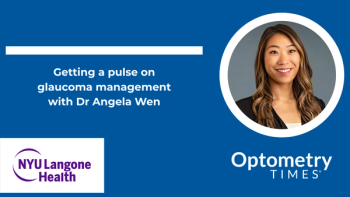
- January digital edition 2021
- Volume 13
- Issue 1
Gonioscopy and imaging work in tandem
Examining patients with both gonioscopy and imaging can reveal potential concerns
ODs perform gonioscopy all the time. Glaucoma patients, glaucoma suspects, and patients who have ocular hypertension undergo gonioscopes as well as trauma patients to rule out recession, patients with retinal vascular occlusions, diabetics, and the list goes on from there.
Practicing gonioscopy
I recall vividly when I first learned the procedure. A significant portion of what I learned while in optometry school (both about gonioscopy and other aspects of clinical care) came from conversations in the hallway and tips on the fly when I was interning in the clinic.
I remember one attending told me that if I wanted to become really proficient at gonioscopy, then I should do it on everyone. “Do it on all diabetics, but also do it on the 20-year-old -2.00 D myope who just needs more contact lenses. Really practice it.” Man, was he ever right.
I entered clinic as a third-year intern being able to perform gonioscopy but frankly afraid of it. Hey, I was a kid. Further, it is akin to a bad joke that the internal reflective properties of the cornea (which is a clear tissue) make mirrors necessary to view the structures of the anterior chamber angle. By the end of a couple of weeks with this attending who was, I’ll stop just short of “trial by fire,” the procedure became second nature to me. Diagnostic contact lenses frightened me no more!
To this day, I am still a fan of performing dilated fundoscopy of the posterior pole through the center lens of a 3-mirror lens when views are difficult to attain. I am not sure, but I would guess that’s a dying art.
Take photos
Speaking of times when it is difficult to get a good view of a fundus, let me share with you another clinical pointer which has continued to be of great help through the years. When I was a fourth-year intern, I had a patient who was particularly squeamish about having bright light directed at her macula (and rightfully so, I might add). Unfortunately, she also had moderate cataracts. I should also mention that this was her cataract evaluation to determine if she was a good candidate for cataract extraction. I sheepishly went in and asked my attending to check my exam findings as I was having a difficult time viewing her maculas. He did, but not before saying 4 words that proved to be of great and lasting service: “Go take some photos.”
I did, and the photos I took complemented my examination of the patient greatly. I recall later on in my residency being in a room with maybe half a dozen interns when the attending asked if anyone had ever missed something in a retina and later picked it up on a retinal photograph. The sole hand that went up was mine. He looked at me and said, “Honest man.” Well, I suppose I am nothing if not honest.
No one can argue the fact that it is pointedly simpler to sit back and look at a high-quality photo and digest all of its details and characteristics while sipping coffee than it is to fight the remarkably strong orbicularis muscles of a patient whose eyes instinctively undergo a complete Bell’s phenomenon when his lids are pried open for fundoscopy.
No, I do not think photos take the place of live fundoscopy (not even stereo photos), but they do have their place. Some clinicians have techniques which are more proficient than others, but no one is superhuman.
Assess images
So, what do gonioscopy and photography have in common? With that question in mind, I turn to a review on anterior chamber angle assessment.1 This review paper goes through several different methods by which the anterior chamber angles can be assessed. Several different examples of gonio-photographic technology are discussed, as are other technologies such as anterior segment optical coherence tomography (AS-OCT) and ultrasound biomicroscopy (UBM).
Acquiring high-quality photographic images of the anterior chamber angles has obvious advantages. The ability to assess a static image of an angle is a luxury I do not currently have, but I am envious of those who do. As for UBM, it is a relatively simple procedure which can quickly determine a narrow angle. As its name implies, UBM technology makes use of sound waves to “view” the structures of the angle.
AS-OCT is a quick procedure that is simple to perform and good at identifying narrow angles. Instead of sound waves, AS-OCT makes use of electromagnetic radiation (of course, at safe levels) in order to acquire its images. However, there are aspects of the anterior chamber angle beyond the position and configuration which need to be assessed. When adding up all of these “qualitative” variables, such as pigment, glaucomflecken, blood, and subtle neovascularization, I am afraid we will have to continue performing gonioscopy for some time.
Articles in this issue
almost 5 years ago
Imaging to differentiate disc drusen from papilledemaalmost 5 years ago
5 things to get your patients ready for cataract surgeryalmost 5 years ago
Contact lens trends during COVID-19almost 5 years ago
Blepharitis requires patient educationalmost 5 years ago
How to implement IPL into an optometry practicealmost 5 years ago
How ODs can address patients lost to follow upalmost 5 years ago
What ODs need to know about the new COVID-19 relief packageabout 5 years ago
ODs look to what 2021 will bringNewsletter
Want more insights like this? Subscribe to Optometry Times and get clinical pearls and practice tips delivered straight to your inbox.













































.png)


